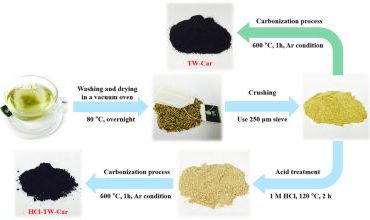Improved battery capacity? Sounds like my cup of tea
There are some strange uses for a spent tea bag after it’s made your cuppa, but work recently published in Scientific Reports really takes the biscuit. A group of researchers in Korea have managed to demonstrate an enhanced carbon anode structure from waste tea leaves that could be a path to cheap, high-capacity lithium […]



